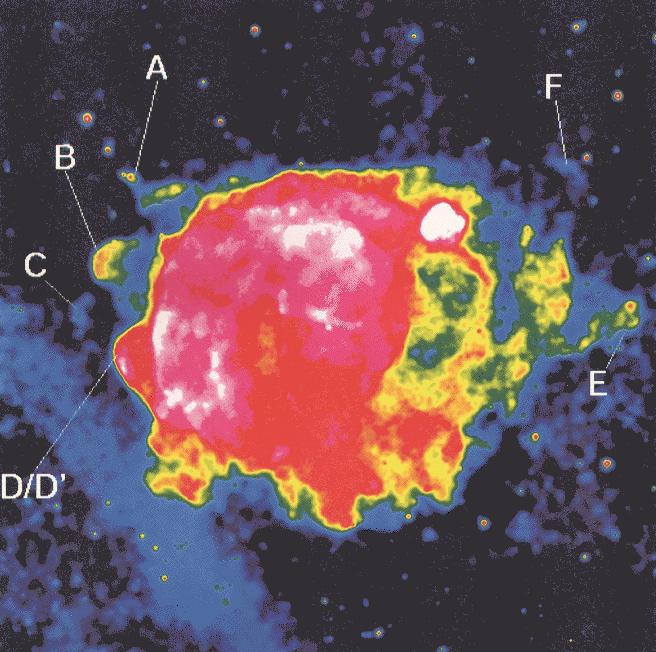
 Credit: Max-Planck-Institut für extraterrestrische Physik and the ROSAT Mission
Credit: Max-Planck-Institut für extraterrestrische Physik and the ROSAT Mission
Broken Star Bubble
When a star explodes, is the explosion equal in all directions, or is the
explosion more forceful in some directions than others? In the particular
case of the Vela supernova remnant, the remains of a stellar explosion
which happened about 11,000 years ago, astronomers have taken an X-ray
image of this remnant and found a round ball of million degree gas, as
shown in the above X-ray image. This image, obtained by the ROSAT Position
Sensitive Proportional Counter, shows the bubble of hot gas produced by the
explosion as a surprisingly uniform sphere, though variations in the sphere
produced by the non-uniformity of the interstellar gas and dust surrounding
the explosion are also evident. This indicates that the explosive force
was nearly equal in all directons. Surprisingly though there are pieces of
material which have shot through the bubble. These pieces are labelled A-F
in the above image. Astronomers can trace these pieces back to a common
origin. The origin is very near the white point of X-ray light near the
center of the supernova remnant; this white point is a neutron star, the
remains of the collapsed core of the exploded star.
Last Week *
HEA Dictionary * Archive
* Search HEAPOW
* Education
Each week the HEASARC
brings you new, exciting and beautiful images from X-ray and Gamma ray
astronomy. Check back each week and be sure to check out the HEAPOW archive!
Page Author: Dr. Michael F.
Corcoran
Last modified August 13, 2001


